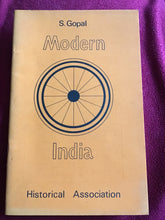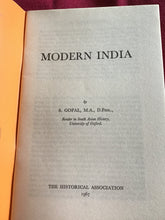Collectible good.
….MODERN INDIA
MODERN INDIA is the result of the impact of the West on Indian
traditions. No other country of Asia or Africa which has gained
its freedom in our time bears so markedly the influence of
European, and particularly British, thought and ways of life
and has yet retained, as live factors in contemporary life, so
many elements of its carlier heritage. There is nothing sur-
prising in this, India has always been an assimilator of cultures.
It has, throughout the centuries, absorbed everything which is
worthwhile that has come its way; and its indigenous civiliza-
tion had been enriched by its encounters with the Greeks, the
Arabs and the Turks of Central Asia. Then came about two
hundred years of British rule, as a consequence of which India
is today a strong bridge between Asia and Europe.
….
It was in 1485 that Vasco da Gama reached the shores of India,
being the first European to do so in any strength; and some
historians therefore date from that year the beginnings of
European colonialism in Asia. But as far as India was con-
cerned the decisive impact was for long delayed. The Portu-
guese had been followed by the Dutch, the Danish, the French
and the British; but until the middle of the eighteenth century
none of them had established anything more than a few trading
posts in the coastal areas. These had no bearing on the daily
life of the people. India continued to be a conglomeration of
villages, interspersed with a few towns. The cultivable land was
owned by the peasants, though there is some doubt as to whether
they enjoyed all the rights of ownership such as the right of sale.
The concept of village ownership of land is now known to bea
myth. But the land was tilled primarily to meet the needs of the
village. As a supplementary source of income, handicrafts were
fostered. The economy functioned at a low pressure, just
sufficient to maintain a minimum level of subsistence. However
there is little evidence of discontent ….






